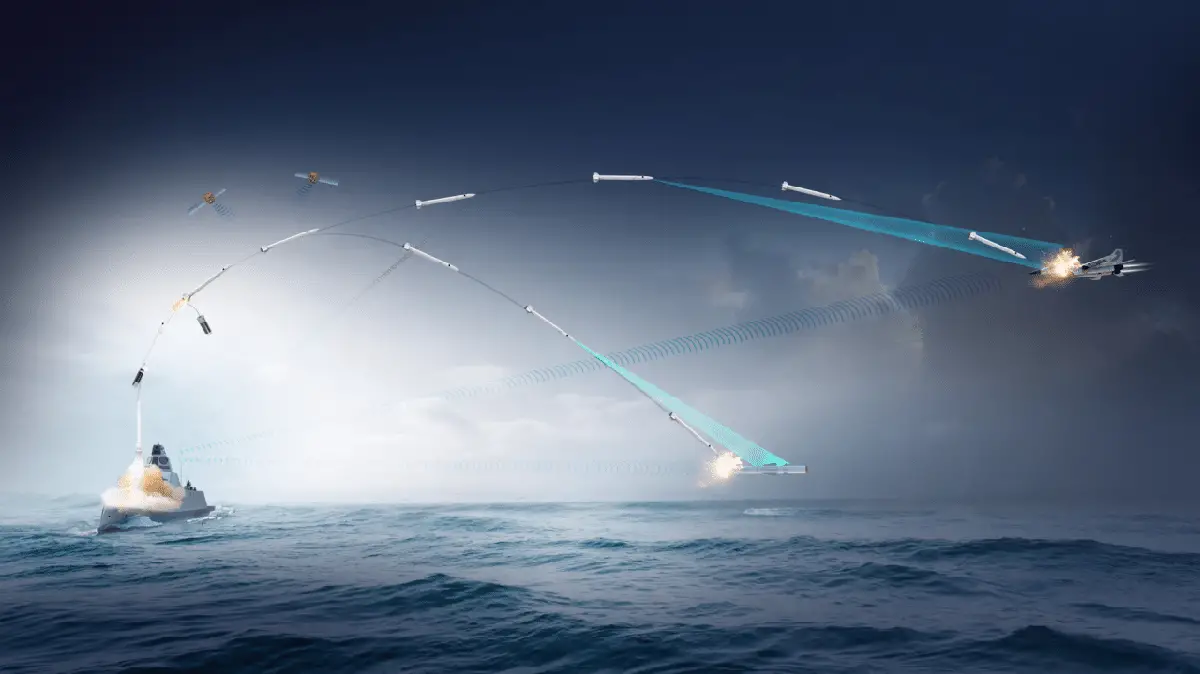The South Korea’s Defense Acquisition Program Administration (DAPA) has signed a 330.6 billion-won (US$250 million) contract with local defense company LIG Nex1 Co. for the development of a long-range ship-to-air missile by 2030. The two sides signed the deal Thursday for the air defense weapon to be equipped on a homegrown warship under development to counter North Korean aircraft and cruise missile threats. It did not provide the planned specifications of the missile. The Ship-to-Air Missile-II is a new type of air defense missile designed to be mounted on the Korean Next-Generation Destroyer (KDDX). South Korea is currently developing the new 6,500-ton Korea Destroyer Next Generation (KDDX) as part of a 7.8 trillion-won project to acquire six destroyers with advanced homegrown combat systems by the 2030s.
The LIG Nex1 Ship-to-Air Missile-II stands out as a crucial component in safeguarding ships against airborne threats, including potential adversaries like North Korean aircraft and cruise missiles. Designed to enhance the survivability of vessels, particularly as South Korea advances its own indigenous destroyer project, the KDDX, the Ship-to-Air Missile-II is poised to play a pivotal role. Recognizing the imperative of leveraging domestic technology for guided weapons on the KDDX, the Defense Acquisition Program Administration (DAPA) has spearheaded efforts to ensure a localization rate exceeding 90%. Utilizing state-of-the-art precision guidance and search capabilities, the SAM-II aims to replace the existing American-made SM-2 surface-to-air missiles utilized by the Republic of Korea Navy (ROKN), while mirroring the operational purpose and concept of its predecessor.

The KDDX project will see the integration of a ballistic missile interception system, further fortifying South Korea’s naval capabilities. This initiative involves the adaptation and development of the naval variant of the “L-SAM,” a long-range surface-to-air guided weapon, utilizing indigenous technology. Consequently, the KDDX will be equipped with a suite of Korean-designed medium-range and long-range surface-to-air missiles, capable of intercepting ballistic missiles, thus ensuring comprehensive defense against evolving threats. The development and implementation of the Ship-to-Air Missile-II and the ballistic missile interception system underscore South Korea’s commitment to self-reliance in defense technology and its determination to bolster maritime security in the face of emerging challenges. These advancements not only signify a significant stride towards enhancing the nation’s naval capabilities but also serve as a testament to the ingenuity and innovation of South Korea’s defense industry.
The LIG Nex1 (Elaiji Nekseuweon), formerly known as NEX1 Future, and LG Innotek is a South Korean aerospace manufacturer and defense company. It was established in 1976 as Goldstar Precision. LIG Nex1 was previously owned by LIG Holdings Company, which in turn was owned by the LIG Group. In 2013, a consortium led by South Korea private equity firm STIC Investments acquired 49 percent stake in LIG Nex1 for 420 billion Korean won. It develops and produces a wide range of advanced precision electronic systems, including missiles, underwater weapon systems, radars, electronic warfare, avionics, tactical communication systems, fire control systems, naval combat systems, and electro-optics. It is one of the major suppliers of weapon systems for the Republic of Korea Armed Forces, as well as an international exporter of weapon systems.











